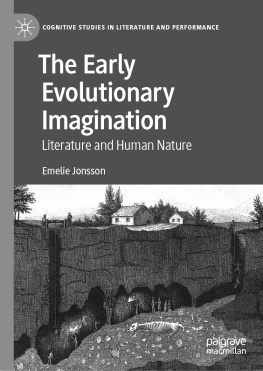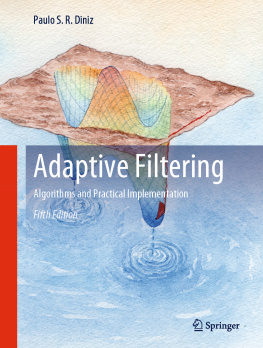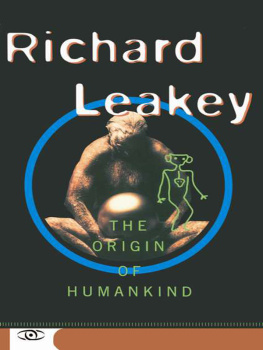NATURALS
The Origin, Background, and Evolutionary Adaptive Strategy of Womanizers, Pimps, Bad Boys, Players,and Certain Dysfunctional Men.
DARK TRIAD
VS
ADROITNESS
By Jay Moap
All Rights Reserved
DISCLAIMER
THIS BOOK IS STRICTLY FOR INFORMATIVE PURPOSES.
THE UNDERSTANDING OF THE PRESENTED TERMINOLOGIES AND
THE CONTEXT OF THIS BOOK MAY BE REGARDED AS BENEFICIAL IN ORDER TO IDENTIFY CERTAIN DYNAMICAL ELEMENTS OF SOCIAL AND SEXUAL INTERACTIONS.
The purpose of this book is to give an understanding of certain types of men, associated with social and interpersonal lifestyle, as well as adaptive mating strategies.
The evolution and origin of these strategies associated with social conditioning, norms, and conducts, which represent behavioral inhibition or learning.
Furthermore, this book highlights the contrast, by revealing certain influences of uninhibited primal human nature, which consistently impacts sexual behavior and said adaptive strategies.
"The more we think we know...the more we realize how much we don't know..."
"SOMETHING YOU ARE JUST BORN WITH "
As a human being, in the moment of birth, you are a susceptible system. As a system, predetermined initial conditions/limits influence you right from the beginning, based on genetic inheritance. In the moment of birth, you start interacting with your environment under time evolution, which is one-directional. This is what we may call, the arrow of time.
After birth, interaction with the environment is likened to a one-way process to some extent, while the climate induces certain types and various conditions. These conditions induce different constraints, through various feedback loops, on how you develop as a system.
Specific exposures and interactions with the environment act as a moderator, or influence, on how yours develops. This can cause the highlighting of certain aspects of your behavior, while other influences act as constraints. For example, learned, or so-called inhibition causes a moderation or constraint on the uninhibited animalistic nature.
Personal development throughout your life is based on your attention to environmental signals and stimuli that are stressors. They influence or direct attention, corresponding to local coordinates, which add up to continuous environmental interactions of various types. Through reliance on sensory inputs, your brain develops and creates certain concepts and models of the world, based on physical consequences for you and the environmental interactions.
As a child, your attention is instinctive, and because of your lack of experience, to arrange and select prioritization between motivations that are associated with rewards and punishments, you seek to gain information to build as many functional models or concepts as possible. Your interpretation and modeling capacities are rather premature at that point.
An increase in the number of experiences or interactions improves the precision of concept development and modeling reality by distinguishing physical laws and principles associated with the degrees of freedom of yours, within the environmental dynamics. Understanding of physical principles and their constraints on executive autonomous experience is one segment of adaptation.
Here, we can distinguish the difference between evolutionary fitness and adaptive fitness, at least about the context of this book. Evolutionary fitness, in a simplified form, is associated with one parameter only. How many times you reproduce, or how many offspring you create. Adaptive fitness corresponds to both, such as survival and reproduction, and applies to individual lifestyle strategy. From a natural point of view, your role is to reproduce.
Hence, your survival only matters to the extent which fulfills that said reproductive role. As you conceptualize and create models of the world, and introspective processes develop your self-identity, the more precise these concepts and models become, and the greater the potential to increase your adaptive capacity and success in your environmental interactions. We call this learning.
Your premature, rather instinct-driven, impulsive tendencies reduce by a sufficient amount of experience. The coupling of your attention to environmental stimuli becomes more selective between prioritization of potential motivation factors or opposing through ignorance or filtration of certain environmental stimuli.
We can identify this filtering with a conscious effort towards a reduction in the amount of given environmental stimuli, which then preserves the time and energy of the individual to select higher priority rewards. This top-down process enhances the tendency toward increasing the functional efficiency of the organism between its energy input and output. You cannot ever voluntarily decouple your attention entirely from the environment.
All organisms instinctively search for environmental stimuli, whereby the said stimuli represent environmental certainty and serve the purpose through signal processing to gain food, resources, mating opportunities, and so on.
Humans, in the absence of sufficient environmental signals, do not stop seeking to conceptualize. The brain's autopilot builds imaginary situations when attention is less occupied, including when functional models do not exist, but the mind uses it as a reference to build further concepts and models, regardless of how real or imaginary it is.
The models and concepts of the mind help the organism, referring to human beings here, to gain potentially higher success corresponding to signal processing and evaluation of rewards. Although the notion of free will is overrated and should be replaced by degrees of freedom, the child's degrees of freedom are greater than the adults, whose conceptualization of models are more advanced. Hence, adults are less instinctive to respond to environmental stimuli.
The more complete the conceptualization or modeling of the environment about the organism is, the more reduction will apply to the motivational factors, or tendency to simplify prioritization of rewards. The individual becomes more selective and ignores or finds certain stimuli irrelevant or unworthy to maintain interaction to save time, energy, and resources in all capacities. Selectivity towards environmental signals is a fundamental consequence of learning and memory function. However, regarding decision-making processes, any choice of action, including the specific selection of motivation, is influenced by underlying lower-level competition.
The ability of decision-making with environmental complexity associated with different rewards and signals will always generate, and the actual decision or choice of action is the sum of this underlying competition. In this sense, the ability to decide is the representation of emergence in nature and corresponds to environmental complexity, including the organism itself. Hence, the notion of free will is not a representative of freedom of choice, but a necessity, because of the emergence through such competition. Top-down processes are associated with the sum of the competition against complexity. We can understand this as an aim of reduction from an extensive amount of information to a single motivation output upon which the organism will act.
For example, interpreting sensory information requires the conceptualization process, so it can process larger amounts of data into a simpler form of translation, which we call meaning. The so-called consciousness, and decision-making processes, fulfil the function of the agency by which the organism can survive. The top-down influence may put constraints on the organism, but in reality, it is a competition between the agency and the underlying, otherwise-hidden reinforcement of lower scale processes.










